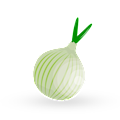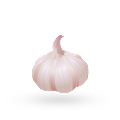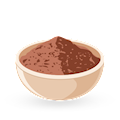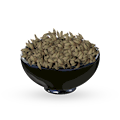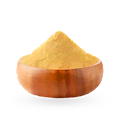Dal tadka or tadkewali dal is a traditional legume-based dish originating from the northern parts of India. Although there are variations, the dish is usually prepared with toor dal (split yellow pigeon peas), garlic, ginger, onions, tomatoes, garam masala, chili peppers, ghee, cumin, coriander, turmeric, red chili powder, and fenugreek leaves.
These ingredients are cooked and mixed with tadka (tempering), consisting of spices such as asafoetida, chili peppers, and garlic that are cooked in ghee. Once prepared, dal tadka is usually garnished with coriander leaves and served hot with jeera rice and roti on the side.
Indian saag paneer is a famous vegetable curry which incorporates diced paneer cheese doused in a creamy mixture of fresh leafy greens, also known under the name saag. It is typically made with mustard, fenugreek, spinach, bathua, or collard greens, mashed and incorporated with tomatoes and a rich spice blend.
In India, the saag mixture is believed to have originated in the Punjabi region, and paneer version is just one of many varieties which incorporates this fragrant curry base. It can be enjoyed as a smaller side dish or a nutritious main meal that is usually accompanied by roti or naan.
MAIN INGREDIENTS
Dahi vada is a popular Indian snack that can also be served either as a main dish or as an accompaniment to vegetable or meat dishes. The dish originates from North India and consists of savory lentil-based fried balls (vadas) that are soaked in a thick yogurt (dahi).
This popular street food is often topped with spices such as chili, cumin, coriander, and various chutneys. The dish is also popular at festive occasions such as weddings, and provides an ideal refreshment on a hot summer day.
Aloo matar is a traditional North Indian dish consisting of sautéed potatoes (aloo) and green peas (matar) combined with tomato sauce and numerous spices such as garlic, ginger, coriander, onion, and cumin. It is usually served piping hot as a side dish, accompanying roti, puri, or naan.
Flavorful and slightly spicy, this popular winter dish has numerous variations, with almost every family in Punjab having their own recipe.
MAIN INGREDIENTS
Jeera rice is a simple Indian dish made with rice and cumin seeds. Basmati rice is typically mixed with cumin seeds which have been fried in ghee, and the dish can be additionally enriched with cinnamon, cardamom, bay leaves, cloves, and coriander.
Once prepared, jeera rice can be served on its own or as an accompaniment to a variety of Indian dishes. The word zeera is Hindi-Urdu for cumin seeds, hence the alternative spelling – zeera rice.
MAIN INGREDIENTS
Aloo palak is a traditional dish originating from the northern parts of the country. Although there are many ways of preparing the dish, it’s usually made with a combination of potatoes, spinach, tomatoes, garlic, cumin, dried hot peppers, turmeric, salt, and oil.
The garlic is fried in oil until it browns, and the cumin, hot peppers, and turmeric are then added to the pot and fried with the garlic. Next, tomatoes, salt, spinach, and potatoes are added to the pot, and aloo palak is simmered over low heat until the water evaporates and the oil separates.
Serve with
Baingan bharta is a vegetarian side dish that is very popular in India, Pakistan, and Bangladesh due to its rich aroma and flavor. It consists of minced and grilled eggplants that are combined with coriander, onion, chilies, and mustard oil, making it an ideal winter dish that is commonly consumed with Indian flatbreads or rice.
It was invented by the Punjabis, but as time went by, it crossed the Punjab borders and became popular throughout India and in other countries. Served piping hot, the dish is usually garnished with grated ginger and coriander leaves. The word baingan refers to the eggplant, while bharta refers to a variety of dishes where the ingredients are mashed before or after the preparation.
Gobi matar is a traditional stir-fry originating from North India. The dish is usually made with cauliflower, peas, turmeric, onions, ginger-garlic paste, oil, lemon juice, coriander, and red chili powder. The vegetables are stir-fried in oil, then served hot in a large bowl.
The dish is typically accompanied by rice, roti, or parathas on the side. Gobi matar can be served as an appetizer or as an accompaniment to other dishes. There are a few variations, so it can be enriched with tomatoes and garam masala spices, if desired.
Masala papad is a traditional snack and a version of papadum flatbread that’s topped with a mix of tangy and spicy ingredients. The flatbread is roasted or fried and it’s usually made with lentil, chickpea, or rice flour. After it’s been roasted or fried until crunchy, it’s topped with a mixture of onions, tomatoes, coriander, hot chili powder, lemon juice, chaat masala, and salt.
It’s important to add the topping after the flatbread has been fried or roasted, otherwise it will get soggy. If desired, additional ingredients can be added to the topping, such as cucumbers, mint leaves, carrots, or raw mango. Masala papad is traditionally served as a snack or an appetizer, but it can also be served as an accompaniment to various Indian meals.
Hailing from North India, dal puri is a variety of puri, a type of round-shaped Indian bread that is deep-fried until crispy, puffy, and golden. This version of the bread consists of puri dough that’s kneaded with a lentil-based mixture.
Numerous versions of the dish exist throughout different regions, and depending on the spices used for its preparation, the dish can range from mildly spicy to hot. The dough is typically made with plain flour, water, salt, and oil, while the filling usually combines mung dal lentils with oil and spices such as ginger, green chili, cumin, fennel seed powder, mango powder, asafetida, and salt.
TasteAtlas food rankings are based on the ratings of the TasteAtlas audience, with a series of mechanisms that recognize real users and that ignore bot, nationalist or local patriotic ratings, and give additional value to the ratings of users that the system recognizes as knowledgeable. TasteAtlas Rankings should not be seen as the final global conclusion about food. Their purpose is to promote excellent local foods, instill pride in traditional dishes, and arouse curiosity about dishes you haven’t tried.





